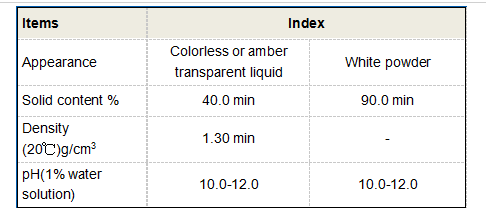coagulation and flocculation
Coagulation and Flocculation Understanding Water Treatment Processes
Water is an essential resource for life, and ensuring its purity and safety is critical for public health. One of the most effective methods of treating water, particularly in municipal systems, is through the processes of coagulation and flocculation. These processes are fundamental in the removal of suspended solids, colloids, and microorganisms, thereby enhancing the quality of potable water.
Coagulation The First Step
Coagulation is the first phase in the water treatment process. It involves the addition of chemical coagulants, such as aluminum sulfate or ferric chloride, into the water. These chemicals are positively charged and attract negatively charged particles suspended in the water, including sediment, bacteria, and organic material. As these particles cluster together, they form larger aggregates known as flocs.
The mechanism of coagulation relies on the destabilization of colloidal particles. In natural water, many of these particles carry a negative charge, which prevents them from clumping together. Coagulants neutralize this charge, allowing the particles to come into close proximity and bond. This initial step can significantly reduce the turbidity of the water, making it clearer and more visually appealing.
Flocculation Aggregating Particles
Following coagulation, the water undergoes flocculation, which is the gentle mixing of water to promote the growth of flocs. Flocculation operates on a relatively slower scale than coagulation, as it requires time for the smaller floc particles to collide and amalgamate into larger flocs. This is typically achieved through the use of flocculating agents that help stabilize these larger aggregates.
In practice, flocculation involves the creation of conditions that favor the assembly of flocs. This is typically done in a flocculation basin where water is mixed gently to facilitate the collision of particles. The blending conditions must be optimized; if the agitation is too vigorous, it can break apart the flocs, while insufficient mixing may prevent them from growing in size.
Larger flocs are then easier to remove in subsequent treatment stages, such as sedimentation or filtration. The efficiency of these processes significantly depends on the size and settling velocity of the flocs, which is directly influenced by the extent of both coagulation and flocculation.
coagulation and flocculation

Importance in Water Treatment
Coagulation and flocculation play vital roles in ensuring the safety and quality of drinking water. These processes not only reduce turbidity but also help in the removal of pathogens, which are often associated with particulates in water. By efficiently reducing the presence of these harmful entities, the risk of waterborne diseases is minimized. This is particularly significant in areas where water sources may be contaminated or where there is a high population density.
Moreover, the effectiveness of coagulation and flocculation can impact the downstream treatment processes. Properly formed flocs facilitate subsequent removal techniques, such as sedimentation, where flocs settle to the bottom of containers, allowing clearer water to be withdrawn from the top. This not only improves the overall efficiency of the water treatment process but can also reduce the operational costs associated with further treatments.
Challenges and Considerations
While coagulation and flocculation are crucial processes, they come with their own set of challenges. The choice of coagulants and flocculants, their dosages, and the conditions under which they are applied must be carefully managed. Different water sources may require different treatment approaches, and ongoing monitoring is essential to adjust chemical dosages and mixing times effectively.
Additionally, the treatment of water must balance efficacy and environmental sustainability. The disposal of excess sludge generated from these processes presents a challenge, as it requires careful handling to mitigate environmental impacts.
Conclusion
In conclusion, coagulation and flocculation are fundamental processes in water treatment that significantly enhance the quality of drinking water. They work collaboratively to remove impurities and pathogens, ensuring that water is safe for public consumption. With ongoing advancements in water treatment technologies and a growing emphasis on environmental sustainability, these processes will continue to evolve, playing a vital role in the future of water purification. Understanding and optimizing these procedures is essential for maintaining safe drinking water supplies worldwide.
-
Water Treatment with Flocculant Water TreatmentNewsJun.12,2025
-
Polymaleic AnhydrideNewsJun.12,2025
-
Polyaspartic AcidNewsJun.12,2025
-
Enhance Industrial Processes with IsothiazolinonesNewsJun.12,2025
-
Enhance Industrial Processes with PBTCA SolutionsNewsJun.12,2025
-
Dodecyldimethylbenzylammonium Chloride SolutionsNewsJun.12,2025





